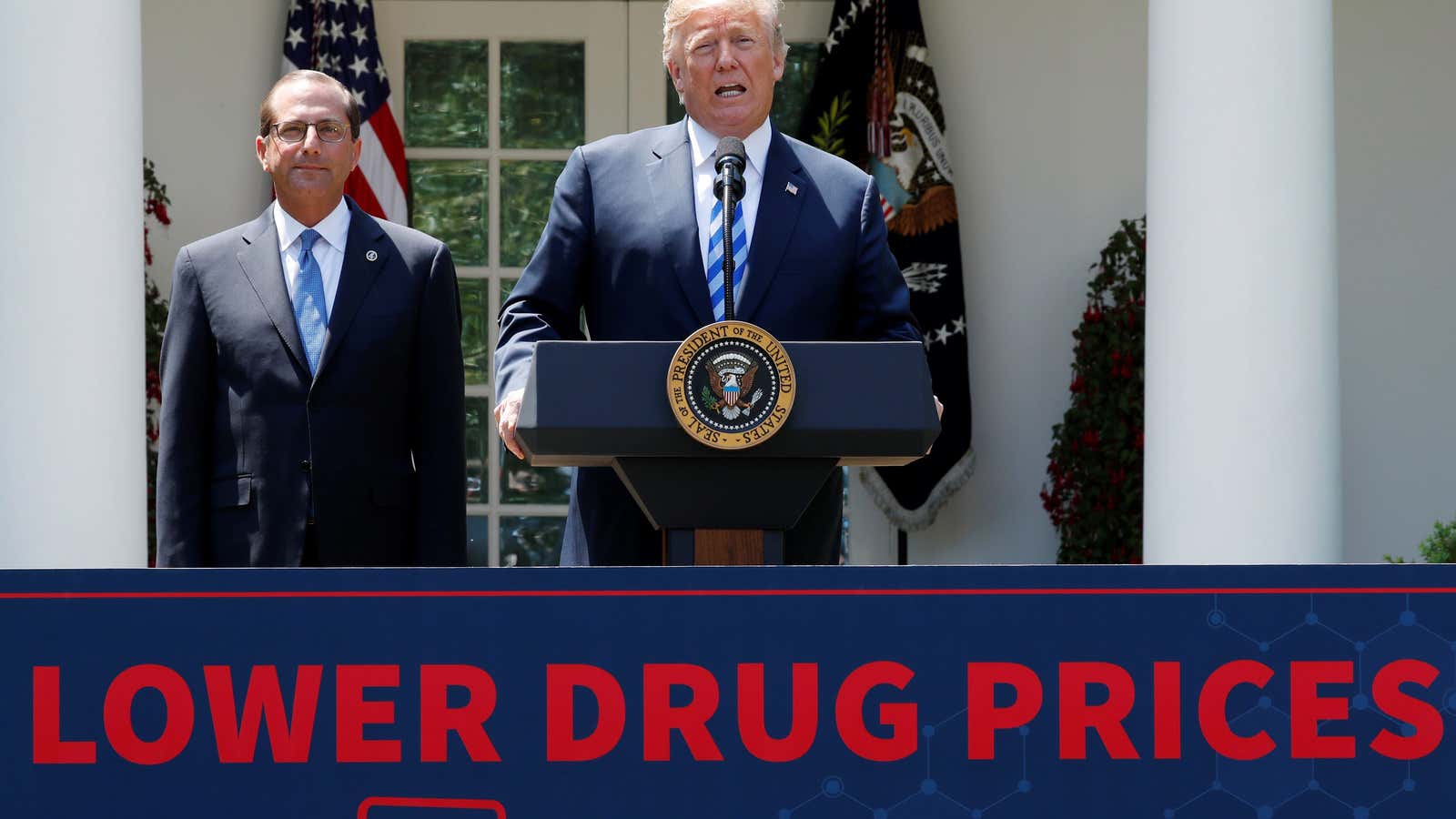Introducing his plan to reduce prescription drug prices in America today, Donald Trump said his government would focus on “tougher negotiation, more competition, and much lower prices.”
The president criticized drug makers and insurance companies for failing to put “American patients first.” After listing a series of measures aimed at the US market—such as encouraging competition between pharmaceutical companies through new patent laws, penalizing drugmakers that raise prices, and making more drugs available over-the-counter—Trump moved onto a familiar scapegoat: the rest of the world.
“When foreign governments extort unreasonably low prices from US drugmakers, Americans have to pay more to subsidize the enormous cost of research and development,” he said. “In some cases, medicines that cost few dollars in another country cost hundreds of dollars in America, for the same pill, with the same ingredients, in the same package, made in the same plant—and that is unacceptable.”
He continued:
It’s time to end the “global freeloading” once and for all. I have directed US trade representative Bob Lightheizer to make fixing this injustice a top priority with every trading partner, and we have great power over the trading partners—you’re seeing that already.
America will not be cheated any longer, and especially will not be cheated by foreign countries. The American people deserve a health care system that takes care of them, not one that taxes and takes advantage of our patients, and our consumers, and our citizens.
Trump is right that American prescription drug prices are unfairly high in America. And it is true that the US is the biggest funder of research in the pharmaceutical and biomedical sectors. But that is not what keeps the cost of medications so much higher in the US.
As Quartz noted in the past, one reason the US can’t get low drug prices is because it lacks the bargaining power of a cohesive public health system, unlike in countries with socialized medicine. In the US, the task of negotiating drug prices is left to individual care providers rather than a single, large, publicly funded buyer .
Pharmaceutical companies also pass on the expense of their enormous marketing campaigns to American consumers. The US is one of only two countries (the other is New Zealand) that allows direct-to-consumer advertisement of prescription drugs, while elsewhere promotion is limited to medical professionals. This affects the cost of the drug far more than research and development according to Robert Yates, former World Health Organization senior health economist.
It’s also worth noting that pharmaceutical companies have higher profit margins than most other sectors (with the sole exception of software).
In other words, pharmaceutical companies don’t need to charge more in the US to offset research costs for drugs that they sell elsewhere; they do so because they can.
